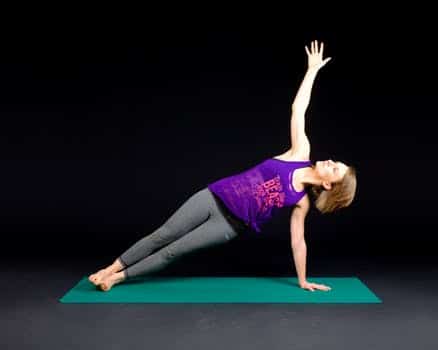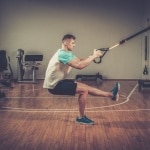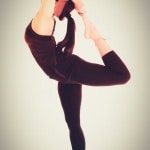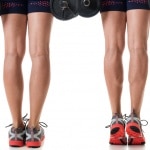August 2017
Intelligent Training for Painful Muscles
Believe it or not, scientists are still not sure what exactly causes musculoskeletal pain (MSP) from chronic use, overuse or abuse.
A couple of Danish researchers propose a model that attempts to explain the source of such pains as are typically seen in office and manufacturing workers and some athletes where the precise cause is not an acute event such as a fall, a collision or a wound of a different sort.
Recognizing that many people who engage in very low-intensity activity bordering on sedentary activity such as computer work have MSP similar in nature to those who engage in highly repetitive moderate to vigorous intensity activity, a more comprehensive perspective was considered.
That posture-constrained occupations and athletic activities yield similar pain events, the two researchers add force levels, static or minimally-dynamic work, peak loads, repetitions and postures into the mix.
They suggest that peripheral neural sources of pain such as those that stimulate nociceptors (pain nerves) within the muscles and tendons themselves may be, after a while, centralized such that a stimulus that would not otherwise cause pain now has a lower threshold that instigates pain. Also, the high frequency of small movements may create a situation of oxygen depletion as if the muscle contractions themselves prevent blood flow to both bring fresh oxygenated blood as well as clear out contraction-related metabolites such as lactic acid.
The authors then propose an exercise model they refer to as “Intelligent Physical Exercise Training” for workplaces where MSP are common. They note that exercise programs that target the areas of pain by doing specific resistance exercises to strengthen and improve muscle endurance that causes short term increases in MSP but eventually solves their work-related pain.
Their model suggests that the best way to reduce MSP is by doing more exercises with those very muscles that are achey!
Essentially these exercises are “dynamic activities performed with large muscle groups that increased muscular, metabolic and cardiovascular load” designed to be done at work in a brief amount of time to achieve the best outcome to prevent MSP. These programs reduce workplace absenteeism and subsequent health care costs and have no negative side effects other than nothing to complain about.
ESSR July 2017
Cardio Fitness Predicts Musculoskeletal Injury
In the never-ending search for predictors of muscle, tendon, ligament or bone/joint injuries – subsumed under musculoskeletal injuries (MSK-I) – the Consortium for Health and Military Performance reviewed massive amounts of data to answer one simple question: what modifiable factors contribute to the injury types and rates of athletes and military recruits?
Reviewing many databases of prior studies, the authors performed a meta-analysis in search of the effects of cardiovascular fitness on MSK-I rates. Using key words, they sought out quality studies that identified how cardio fitness was gaged, quality record-keeping of injuries, a breakdown based on gender and then calculated risk based on fitness. Read more here.

Maximal aerobic tests, like on a treadmill or bike, showed about a 2.8 times greater risk in females of low fitness but insufficient data on men did not allow them to make that kind of assessment. On the other hand, the modified Harvard Step Test (5 minutes at a rate of 120 steps/minute) found that army recruits of both genders were 1.3 times at greater risk of MSK-I.
Overall, the authors concluded that your risk of an injury is higher – by a factor of 1.3 – 2.8 – if you are in low cardio fitness for your sport or activities. Except for a particular group of athletes, rugby players whose risk was 6-fold if they were poor performers of shuttle runs, military recruits and other athletes who have low fitness likely fatigue sooner and therefore are working at higher percentages of their capacities, that predispose them to injuries. Rugby players, outliers in this study, have higher rates of contact injuries where being slow puts you at greater risk.
I’m guessing being slow in combat situations also is not a good deal, either.
JSCR June 2017
Exercise of the Month
The Side Plank
There are many ways to train and condition the core, that section of the body that spans from the mid-thorax to the mid-thigh, front, back and sides.
Core strength and endurance are critical for spinal function and safety as well as most regular-life and recreational or competitive sports performance.
Over the past two decades, borrowed from yoga practice, planks have entered mainstream applications. The front plank is done starting on the belly and raising the trunk and hips off the floor. The side plank, pictured here, is done lying on your side, propped on either the elbow or the extended arm, and raising the trunk and hips. It is essential to form a straight line that runs through the middle of the head, the spine, the sacrum and to that space between the feet.
In this example of a yoga plank, the woman looks upward; that is not essential to the core exercise. Too, she raises her non-supporting arm; that is not essential. But this is a highly advanced version; novices may wish to start the move with the feet staggered so as to have better balance. Other modifications if the wrists or shoulders are the weak link are to do them on the bent elbow, with the forearm at 90 degrees to the body; it’s more stable but it’s also more challenging to the actual core itself as the body is closer to parallel to gravity’s pull and the arm/shoulder is not the weak link.
It is recommended that you start with brief- 3-5 seconds – holds and progress to 10-15 second holds. Work your way to 10 repetitions of 15 seconds. Excessively long holds are potentially dangerous to the shoulder (and wrist) and may not serve the core any better than short holds done repetitively.
The muscles worked are the shoulder stabilizers – the rotator cuff, the latissimus dorsi, the internal and external obliques on the side closest to the floor, the opposite lumbar erector muscles, the quadratus lumborum on the same side as the obliques, the tensor fascia lata along the side of the hip and thigh. Also engaged, and for this reason highly recommended for athletes to prevent knee injuries, is the gluteus medius on the floor side. This crucial hip abductor is known to help control aberrant knee movements associated with patellofemoral knee pain and anterior cruciate ligament sprains.
Recipe of the Month
Quinoa Pilaf with Lemon & Herbs
From Tufts Health & Nutrition Letter, February 2017 (For subscription information please call (800) 274-7581, or go to www.TuftsHealthLetter.com)
Ingredients:
- 2 tsp olive oil
- 1 chopped small onion
- 2/3 c shredded carrot;
- 2/3 c rinsed, drained quinoa
- 1 1/3 c reduced-sodium chicken (or vegetable) broth
- 1/4 c chopped fresh parsley (or dill)
- 2 tsp grated fresh lemon zest
- 1/4 tsp salt and pepper to taste
Directions:
Heat 2 tsp olive oil in a saucepan over medium heat.
Add 1 chopped small onion and 2/3 cup shredded carrot; saute until softened, 2 to 3 minutes.
Add 2/3 cup of quinoa; cook, stirring, until aromatic, 1 to 2 minutes.
Add 1 1/3 cups of broth; bring to a simmer.
Reduce heat to low, cover and simmer until quinoa is tender and most of the liquid has been absorbed, 12 to 15 minutes. Remove from heat.
Add 1/4 cup chopped fresh parsley (or dill), 2 tsp grated fresh lemon zest, 1/4 tsp salt and pepper to taste; fluff with a fork.
Nutritional Analysis per serving:
Calories: 150 Fat: 4 g Saturated fat: 0.5 g Carbohydrate: 22 g
Total sugars: 2 g Fiber: 3 g Protein: 5 g Sodium: 180 mg
Potassium: 222 mg Iron: 2 mg Calcium: 29 mg Vitamin D: 0 mcg
Tid Bits
The “obesity paradox” is premised on the higher survivability rate of overweight and grade 1 obese people in the face of certain disease states like cancer or acute injury requiring hospitalization. A recent study from the Annals of Internal Medicine reviewing medical records of over 225,000 adults over age 50 found that those with normal BMI (under 25) had “significantly lower risk of early death” vs overweight and obese subjects over time. Tufts Health&Nutrition Letter 07/17
HDL vs LDL – good vs bad cholesterol – is not just black and white as hoped for. Higher HDL tends to be protective of heart disease while higher levels of LDL are risk factors for coronary heart disease (CHD.) Yet, while statin drugs lower LDLs and risk of CHD, no drugs have been effective in both raising HDLs and reducing risk. Even those with genetically-elevated HDL are not at reduced risk. It is recommended with even greater force to eat right, exercise regularly – even vigorously, watch your weight and reduce stress to lower your risk of CHD. Harvard Heart Letter 07/17
A program developed in Japan aligned modern technologies with current cardiovascular training principles to benefit older, community-dwelling individuals. The interval walking training program incorporated a portable calorimeter to measure energy expenditure in real time and an e-health link to record and transmit activity data. The program consisted of 5 sets of 3 minutes of low intensity walking followed by 3 minutes of high intensity walking. After 5 months, aerobic capacity improved by 10%, leg extension and flexion increased force by 13% and 17%, respectively; systolic and diastolic blood pressures dropped 9 mmHg and 5 mmHg, respectively. ESSR 07/17

















